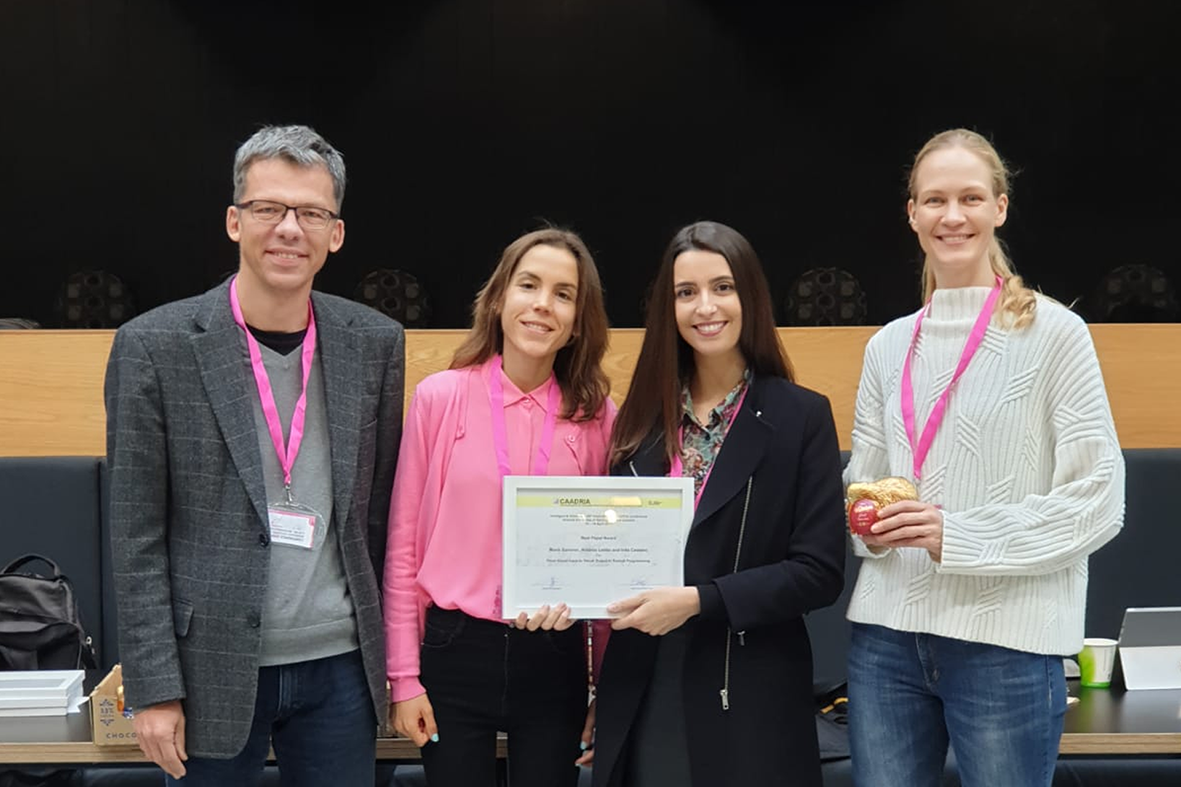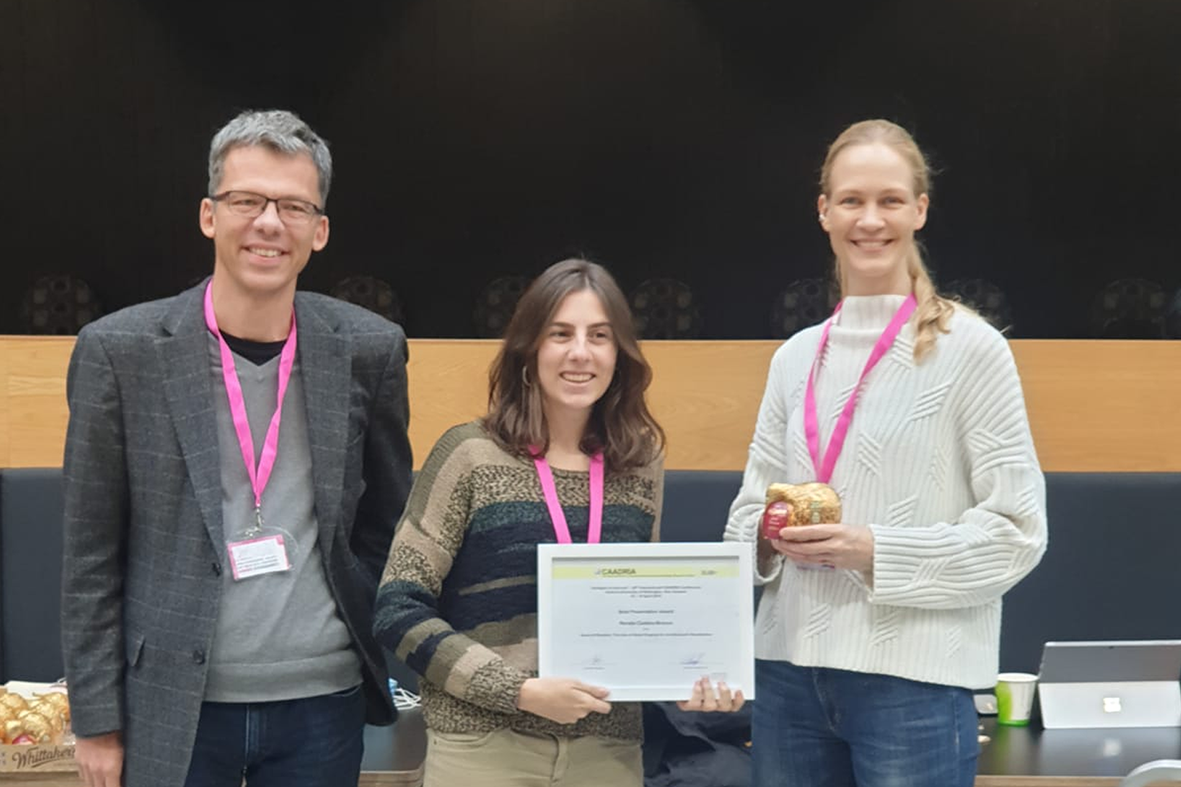CAADRIA 2019 AWARDS
The research team led by INESC-ID Researcher António Menezes de Leitão received last week two awards during the CAADRIA conference, Best Paper Award and Best Presentation Award.

The paper From Visual Input to Visual Output in Textual Programming co-authored by Maria João Sammer, António Leitão and Inês Caetano won the best paper award. The work approaches Algorithmic Design that uses algorithms to generate designs. These algorithms are built using either a Visual Programming Language (VPL) or a Textual Programming Language (TPL). In architecture, there is a clear propensity to the use of VPLs, e.g., Grasshopper or Dynamo, over the use of TPLs, e.g., Python or AutoLisp. In addition to all the user-friendly and interactive features that make VPLs more appealing to architects, most of them already integrate components for textual programming. In contrast, TPLs have not been as successful in incorporating visual features. Given the user-friendliness of VPLs and the relevance of TPLs for large-scale and complex designs, we discuss Visual Input Mechanisms (VIMs) in the context of TPLs. In this paper, we extend previous research in this area by exploring and implementing the most valuable VIMs in a TPL adapted for architectural design.

Best Presentation
Researcher Renata Castelo Branco was awarded best presentation paper
for the publication Game of Renders: The Use of Game Engines for Architectural Visualization. The paper shows that Good visualization mechanisms offer architects, and their clients, a better grasp of how their designs are going to turn out when built, and the experience one might have inside the constructions. This also helps the architect orient the design in a more informed manner. However, typically used modeling tools do not offer satisfactory visualization solutions. The operations available to view and navigate through the 3D space are flawed in terms of speed, interactivity, and real-time rendering quality. To solve this issue, we propose the coupling of a portable algorithmic design framework with a Game Engine (GE) to support interactive visualization of architectural models and increase the rendering performance of the framework. We explain in detail this integration, and we evaluate this workflow by implementing a case study and comparing the performance of the GE to architectural modeling tools.
The 24th Annual Conference of the Association for Computer-Aided Architectural Design Research in Asia under the theme ” ‘Informed & Intelligent” took place in New-Zeland between 15th and 18th of April and within the coverage of the call lied a broad spectrum of approaches ranging from speculative, informal investigations to conventional scientific research.
